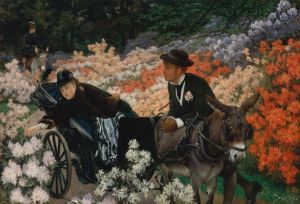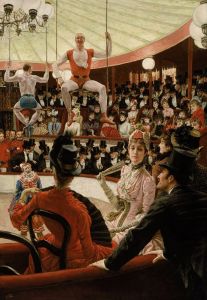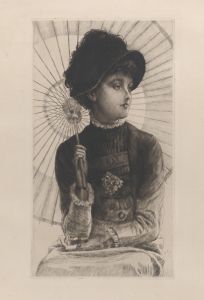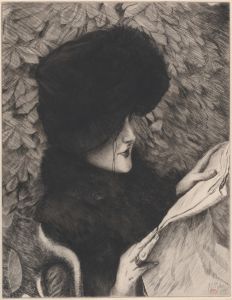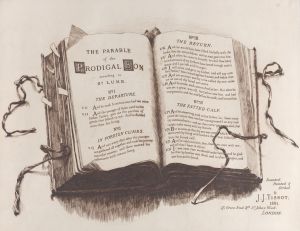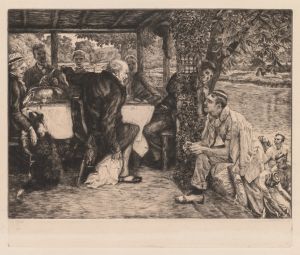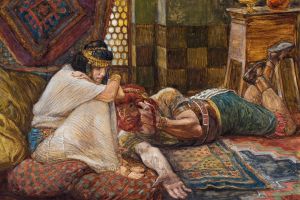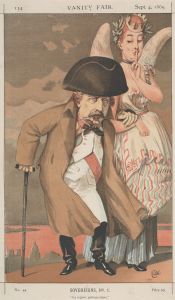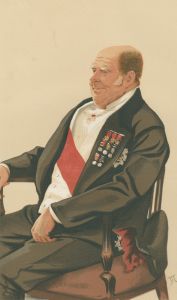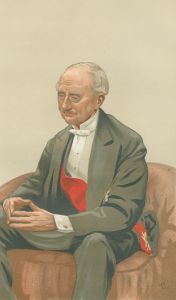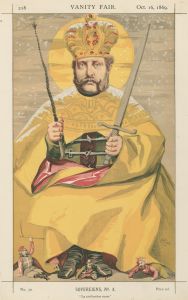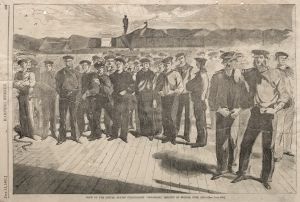
Vanity Fair; Military and Navy; ‘The Queen’s Landlord’, Colonel James Farquharson of Invercauld, August 26, 1876
A hand-painted replica of James Tissot’s masterpiece Vanity Fair; Military and Navy; ‘The Queen’s Landlord’, Colonel James Farquharson of Invercauld, August 26, 1876, meticulously crafted by professional artists to capture the true essence of the original. Each piece is created with museum-quality canvas and rare mineral pigments, carefully painted by experienced artists with delicate brushstrokes and rich, layered colors to perfectly recreate the texture of the original artwork. Unlike machine-printed reproductions, this hand-painted version brings the painting to life, infused with the artist’s emotions and skill in every stroke. Whether for personal collection or home decoration, it instantly elevates the artistic atmosphere of any space.
James Tissot, a renowned French painter and illustrator, created the artwork titled "Vanity Fair; Military and Navy; ‘The Queen’s Landlord’, Colonel James Farquharson of Invercauld" on August 26, 1876. This piece is part of a series of caricatures published in the British magazine Vanity Fair, which was known for its satirical portraits of prominent figures of the time. The magazine, founded by Thomas Gibson Bowles in 1868, aimed to capture the essence of Victorian society through its illustrations and accompanying biographical sketches.
The subject of this particular artwork, Colonel James Farquharson of Invercauld, was a notable figure in 19th-century Britain. He was a Scottish landowner and a military officer, recognized for his service and his connection to the British monarchy. The title "The Queen’s Landlord" suggests his role as a landlord to Queen Victoria, who had a deep affection for Scotland and frequently visited the region. The Farquharson family held significant estates in Aberdeenshire, and their ancestral home, Invercauld House, was situated near Balmoral Castle, the royal residence in Scotland.
Tissot's depiction of Colonel Farquharson is characteristic of the Vanity Fair style, which often combined elements of caricature with a respectful portrayal of the subject's status and personality. The artwork likely captures Farquharson in military attire, reflecting his position and achievements within the British Army. Tissot's skillful use of detail and color would have been employed to highlight both the individuality of Farquharson and the broader social context of his life.
James Tissot himself was an artist who gained prominence in both France and England. Born in Nantes, France, in 1836, Tissot moved to Paris to study art and became associated with the Impressionist movement, although his style remained distinct. He moved to London during the Franco-Prussian War and established a successful career there, becoming known for his portraits of fashionable society and his keen eye for detail.
The Vanity Fair series, including Tissot's work, played a significant role in documenting the figures of Victorian Britain. These caricatures were not only artistic endeavors but also served as historical records of the personalities who shaped the era. The magazine's ability to capture the likeness and essence of its subjects contributed to its popularity and enduring legacy.
In summary, "Vanity Fair; Military and Navy; ‘The Queen’s Landlord’, Colonel James Farquharson of Invercauld" by James Tissot is a notable example of 19th-century caricature art. It reflects the intersection of art, society, and history, capturing a moment in time when figures like Colonel Farquharson were both celebrated and gently satirized. Tissot's contribution to the Vanity Fair series remains a testament to his artistic talent and the cultural milieu of Victorian Britain.





